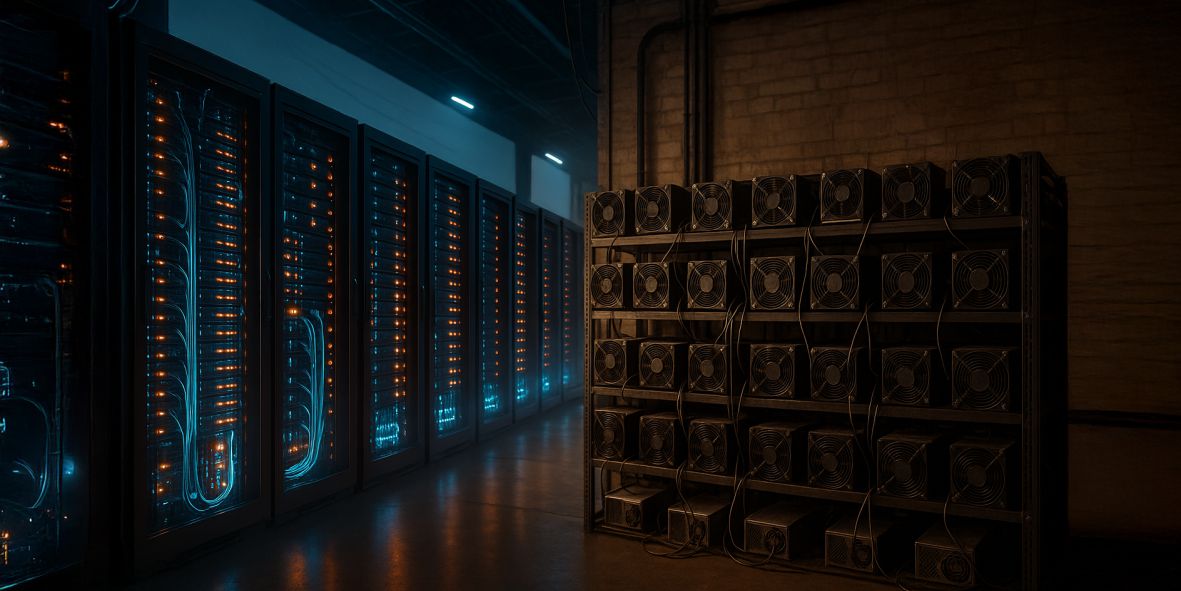Key Takeaways
- Artificial Intelligence (AI) could consume nearly half of global data centre electricity by 2025.
- AI’s energy use already exceeds Bitcoin’s and may soon rival some countries.
- Big tech companies are rapidly expanding data centres, driving AI energy demand.
- Lack of transparency makes tracking AI’s exact power use difficult.
- Experts warn of a looming power crisis and urge greater energy-use disclosure.
A new peer-reviewed study published in the journal Joule projects that artificial intelligence (AI) could consume nearly half of all electricity used by global data centres by the end of 2025, potentially surpassing Bitcoin’s energy footprint. This rapid increase in energy demand raises significant sustainability concerns.
The research, led by Alex de Vries-Gao, a PhD candidate at Vrije Universiteit Amsterdam and a vocal critic of Bitcoin’s energy consumption, estimates that AI data centres utilized 85.4 terawatt-hours (TWh) of electricity in 2023. This figure exceeds the 82.2 TWh attributed to global Bitcoin mining for the same year.
The Soaring Energy Consumption of AI
De Vries-Gao forecasts AI will require approximately 133.1 terawatts (TWh) annually by 2027. This level of consumption could equal or exceed the total energy use of entire countries, such as the Netherlands, which consumed 108.4 TWh in 2022, or Finland, which used 81.7 TWh.
The estimated power demand of AI hardware by 2025 compared to the power demand of Ireland (2023), Switzerland (2023), Austria (2023), Finland (2022), the Netherlands (2023), Bitcoin mining (March 2025), the United Kingdom (2023), France (2023), and total data centre power demand (excluding cryptocurrency mining, 2024); Source: Joule
The study indicates a 26% compound annual growth rate in AI-related data centre energy use from 2023 to 2027. Tech giants, including Microsoft, Meta, and Google, are driving this surge through aggressive expansion of their data centre infrastructure to support AI development.
While AI currently accounts for an estimated 20% of data centre power use, precise figures remain challenging to ascertain due to limited transparency from major companies. De Vries-Gao employed a triangulation method, analysing publicly available hardware specifications, chip production estimates, and corporate earnings calls, to approximate AI’s power demands.
“Since the AI boom began with Chat GPT, there’s been no clear insight into how much energy is actually being used,” de Vries-Gao stated. “Unlike Bitcoin, whose energy use can be calculated from its hash rate, AI consumption is harder to trace,” he added.
Tracing AI’s Hidden Power Demands
Since the tech giants refused to disclose AI-specific energy data, de Vries-Gao followed the chip production. He tracked the chip packaging capacity of Taiwan Semiconductor Manufacturing Company (TSMC), since virtually every advanced AI chip requires its technology.
The math, de Vries-Gao explained, works like a business card analogy. If you know how many cards fit on a sheet and how many sheets the printer can handle, then you can calculate total production. De Vries-Gao applied this logic to semiconductors, analysing earnings calls where TSMC executives admitted to “very tight capacity” and being unable to “fulfil 100% of what customers needed.”
His findings: Nvidia alone used an estimated 44% and 48% of TSMC’s chip production capacity (CoWoS) in 2023 and 2024, respectively. With AMD taking another slice, these two companies could produce enough AI chips to consume 3.8 gigawatts (GW) of power before even considering other manufacturers.
De Vries-Gao’s projection showed AI hitting 23 GW by the end of 2025, assuming no additional production growth. TSMC has already confirmed plans to double its chip production capacity again in 2025.

The Looming Power Capacity Crisis
This escalating demand could lead to what companies like Google describe as a “power capacity crisis” as the industry races to build infrastructure. Meanwhile, firms such as Microsoft and Google have acknowledged rising emissions in their 2024 environmental reports, citing AI as a key driver, though without providing AI-specific data.
Separately, a recent report from consulting firm ICF projects a 25% increase in US electricity demand by 2030, driven by AI, traditional data centres, and cryptocurrency mining.
As AI solidifies its position as one of the most lucrative sectors in technology, fuelled by record profits from Nvidia and AMD and multi-billion-dollar ventures like OpenAI’s Stargate, the environmental impact of digital innovation should draw increasing scrutiny. Experts advocate for greater transparency to accurately assess and mitigate the energy costs of AI at scale.
Read more: IMF Questions Pakistan’s Allocation of Huge Chunk of Energy for Bitcoin Mining







